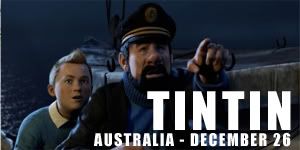Posted here because there's no art forum [hint] in which to post it.
As some of you may or may not know, I'm trying to learn to draw. And I'm not making any progress. None. I'm starting to work through this book called "How To Draw What You See" by Rudy de Reyna in hopes that it will help somehow. Has anyone used this book? What did you think of it?
At any rate, I've seen many skilled artists, both on CAA and deviantART, and I have to wonder how they got where they are. I hate hearing "Well, I haven't really taken any lessons or anything, but I've been drawing and stuff since I was a little kid . . . blah blah blah." All that tells me is, "I have a knack for it." That's no help to me ~ I don't. I want to know how those of you who have to work to develop ability in art did it. What did you practice? How did you practice it? Did you take lessons? What lessons? What do I look for? Basically, I need to know how it's actually done, because I'm lost. I don't want to waste my time doing things that won't help.
Please reply. I have to become an artist. I'll be miserable if I don't ~ though I don't know exactly why. I just can't imagine life without it.
.rai//
"How do they do it?"
11 posts •
Page 1 of 1
"How do they do it?"
[raiden's liveJournal]
[color="Indigo"]"I believe whatever doesn't kill you simply makes you . . . stranger."[/color]
Strollin' in at dawn, wakin' up at noon's gonna catch up to me soon
'Just sleep when you're dead' is what I said 'cause I'm jumpin' off the moon
[color="Indigo"]"I believe whatever doesn't kill you simply makes you . . . stranger."[/color]
Strollin' in at dawn, wakin' up at noon's gonna catch up to me soon
'Just sleep when you're dead' is what I said 'cause I'm jumpin' off the moon
-

Raiden no Kishi - Posts: 2518
- Joined: Fri Apr 09, 2004 10:45 am
- Location: Ticking away/The hours that make up the dull day . . .
Well, most of my practice involved free-hand copy, which is basically when you draw a picture that already exists, and try to make your picture look as similar to that picture as possible. It helps a lot in the long run with proportioning things correctly, placing folds in the right places, etc. You may want to get some art books that focus on anatomy and that kind of thing. But honestly, the one thing that will make you a good artist is practice, practice, practice. I know, that's so totally cliche and everything, but it's sooo true.
All the reading in the world won't help you until you put your ideas to paper and work at it. And if that's what you've been doing, great! Keep at it! Art takes a long time, and I find it very rare that artists are ever satisfied with their work. Draw whatever you can as often as you can, and I'm sure you'll find yourself improving to some extent.
Just out of curiosity, though, why do you feel such a strong need to become an artist?
All the reading in the world won't help you until you put your ideas to paper and work at it. And if that's what you've been doing, great! Keep at it! Art takes a long time, and I find it very rare that artists are ever satisfied with their work. Draw whatever you can as often as you can, and I'm sure you'll find yourself improving to some extent.

Just out of curiosity, though, why do you feel such a strong need to become an artist?
[color="DeepSkyBlue"]4 8 15 16 23[/color] 42
[color="PaleGreen"]Rushia: YOU ARE MY FAVORITE IGNORANT AMERICAN OF IRISH DECENT. I LOVE YOU AND YOUR POTATOES.[/color]
[color="Orange"]WELCOME TO MOES[/color]

-

Radical Dreamer - Posts: 7950
- Joined: Sat May 28, 2005 9:00 am
- Location: Some place where I can think up witty things to say under the "Location" category.
Like I said ~ it's just something inside. I don't -know- why. I just do.
.rai//
.rai//
[raiden's liveJournal]
[color="Indigo"]"I believe whatever doesn't kill you simply makes you . . . stranger."[/color]
Strollin' in at dawn, wakin' up at noon's gonna catch up to me soon
'Just sleep when you're dead' is what I said 'cause I'm jumpin' off the moon
[color="Indigo"]"I believe whatever doesn't kill you simply makes you . . . stranger."[/color]
Strollin' in at dawn, wakin' up at noon's gonna catch up to me soon
'Just sleep when you're dead' is what I said 'cause I'm jumpin' off the moon
-

Raiden no Kishi - Posts: 2518
- Joined: Fri Apr 09, 2004 10:45 am
- Location: Ticking away/The hours that make up the dull day . . .
Just wanted to point out, "haven't had lessons" --> self taught, "since a kid" --> many many years of practice. To be fair, even the skilled artists here had to work hard in order to reach the point where they are today.
My first suggestion is to decide on a certain theme to focus on first.
#People?
#Machinery?
#Scenery?
#Animals?
It's best to first decide WHAT exactly you're trying to draw and to focus on it, designating it as your desired specific skill/strength. I'm comfortable drawing people without references but I totally sink with mechanical objects - Must.Have.References. With that said, the rest of my post will be based on how I learn how to draw ppl.
How did I practice?
***********************
A: TRACING STAGE
1. Pick something you would like to emulate/Use a reference of something you want to draw. Collect a whole bunch of books, images, magazines....whatever you envision yourself drawing. I have a huge collection of images in my hard drive and an equally huge collection of artbooks/manga/comics.
2. Try to copy it as closely as possible. Trace if you have to. I still do when necessary. How do I trace? Paper over paper - (a lightbox would be nice though)
3. Keep doing it again and again until you're able to reproduce it without referring to the original
It doesn't matter what book, image, object you use as a reference. An example: I used Disney movie screencaps when I wanted to draw characters such as Princess Jasmine. I took out scenes of her different facial expressions and body poses. I even bought children books of Aladdin as further reference - coloring books/linearts are particularly useful.
Another example: I liked how Watsuki Nobuhiro draws the folds of clothing and hands. I copied random scenes in the manga of hand and clothing angles. If I wanted a flowing cloak, I would check out Sensei Hiko. If I wanted to draw how a kimono looks like when one is sitting, I look for images of Kaoru sitting down in the manga.
Yet another example: I haven't drawn shonen action panels much so I turned to manga titles I liked for action scenes like BlackCat. If I want to know how a fist looks like when punching someone from the left, I sat down and went through the BlackCat manga trying to find a panel that suits my intention. Once I found something that looks cool, I worked on how to reproduce it - E.g. "Add jagged lines to the outline of the fist, use a horizontal lined pattern in the background"
If I can't that particular image in books/magazines/online images, I use a mirror and use myself as a model.
At this point, you don't really need ppl's opinion or feedback because you have a specific reference that you want to match. You will -know- if your copy isn't similar with the original. Keep working until it does.
4. Once it starts to look similar, start adding your own ideas to that copied subject. "Hmm....let me try a different hairstyle on Princess Jasmine that Disney has never done before. I wonder how she'll look in jeans and a T- shirt." If you're still stuck, have a look at doujinshis or fanarts to have an idea of how fans mess around with variations of the original character (NOTE: Do watch out and stay clear of yaoi/yuri/hentai in the fandom)
This eventually encouraged me to move onto the other stage......
B: EXPERIMENTAL STAGE
1. Once you feel comfortable drawing "on your own", start experimenting with your own ideas.
2. Start easy, "Let's see how a blond Sasuke-lookalike in a samurai getup looks." Or "Placing a female character in the pose of a reference original image of a guy" There's a lot of variations you can try out
- Even professional artists use some amount of referencing in their original designs so there's no need to feel bad. I call it "being inspired by other works"
3. Feel free to continue expanding, "What if his hair is longer? How would he look?" Asking "what if ....s" helps in testing out ideas.
4. This is the time to start asking for ppl's feedback and opinion of your design/drawing. Keep in mind, opinions about one's art style are a matter of preference and you will find a good mix of negative and positive responses. That's fine.
***********************
My point really is this: Using references in drawing is very common. So common, it's not even funny. I would imagine you would feel rather good once you've passed the tracing stage.
I haven't seen any of your works (have you posted any?) so it's challenging to give you any specific instruction/guidance, thus the general approach I've taken in this post.
My first suggestion is to decide on a certain theme to focus on first.
#People?
#Machinery?
#Scenery?
#Animals?
It's best to first decide WHAT exactly you're trying to draw and to focus on it, designating it as your desired specific skill/strength. I'm comfortable drawing people without references but I totally sink with mechanical objects - Must.Have.References. With that said, the rest of my post will be based on how I learn how to draw ppl.
How did I practice?
***********************
A: TRACING STAGE
1. Pick something you would like to emulate/Use a reference of something you want to draw. Collect a whole bunch of books, images, magazines....whatever you envision yourself drawing. I have a huge collection of images in my hard drive and an equally huge collection of artbooks/manga/comics.
2. Try to copy it as closely as possible. Trace if you have to. I still do when necessary. How do I trace? Paper over paper - (a lightbox would be nice though)
3. Keep doing it again and again until you're able to reproduce it without referring to the original
It doesn't matter what book, image, object you use as a reference. An example: I used Disney movie screencaps when I wanted to draw characters such as Princess Jasmine. I took out scenes of her different facial expressions and body poses. I even bought children books of Aladdin as further reference - coloring books/linearts are particularly useful.
Another example: I liked how Watsuki Nobuhiro draws the folds of clothing and hands. I copied random scenes in the manga of hand and clothing angles. If I wanted a flowing cloak, I would check out Sensei Hiko. If I wanted to draw how a kimono looks like when one is sitting, I look for images of Kaoru sitting down in the manga.
Yet another example: I haven't drawn shonen action panels much so I turned to manga titles I liked for action scenes like BlackCat. If I want to know how a fist looks like when punching someone from the left, I sat down and went through the BlackCat manga trying to find a panel that suits my intention. Once I found something that looks cool, I worked on how to reproduce it - E.g. "Add jagged lines to the outline of the fist, use a horizontal lined pattern in the background"
If I can't that particular image in books/magazines/online images, I use a mirror and use myself as a model.
At this point, you don't really need ppl's opinion or feedback because you have a specific reference that you want to match. You will -know- if your copy isn't similar with the original. Keep working until it does.

4. Once it starts to look similar, start adding your own ideas to that copied subject. "Hmm....let me try a different hairstyle on Princess Jasmine that Disney has never done before. I wonder how she'll look in jeans and a T- shirt." If you're still stuck, have a look at doujinshis or fanarts to have an idea of how fans mess around with variations of the original character (NOTE: Do watch out and stay clear of yaoi/yuri/hentai in the fandom)
This eventually encouraged me to move onto the other stage......
B: EXPERIMENTAL STAGE
1. Once you feel comfortable drawing "on your own", start experimenting with your own ideas.
2. Start easy, "Let's see how a blond Sasuke-lookalike in a samurai getup looks." Or "Placing a female character in the pose of a reference original image of a guy" There's a lot of variations you can try out
- Even professional artists use some amount of referencing in their original designs so there's no need to feel bad. I call it "being inspired by other works"
3. Feel free to continue expanding, "What if his hair is longer? How would he look?" Asking "what if ....s" helps in testing out ideas.
4. This is the time to start asking for ppl's feedback and opinion of your design/drawing. Keep in mind, opinions about one's art style are a matter of preference and you will find a good mix of negative and positive responses. That's fine.
***********************
My point really is this: Using references in drawing is very common. So common, it's not even funny. I would imagine you would feel rather good once you've passed the tracing stage.
I haven't seen any of your works (have you posted any?) so it's challenging to give you any specific instruction/guidance, thus the general approach I've taken in this post.
-
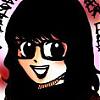
Mave - Posts: 3662
- Joined: Tue Aug 12, 2003 9:00 am
Thanks for that Mave. I've been struggling also and making next to no progress so its interesting to hear these things.
My problem is that I loved to draw only things from my head or original creations and I avoided things like copying like the plague. Only problem is my drawing skills aren't so great now. As they say: back to the drawing board!
My problem is that I loved to draw only things from my head or original creations and I avoided things like copying like the plague. Only problem is my drawing skills aren't so great now. As they say: back to the drawing board!
-

Warrior 4 Jesus - Posts: 4844
- Joined: Tue Sep 07, 2004 10:52 pm
- Location: The driest continent that isn't Antarctica.
I'm not saying to copy the style of your favorite artists, but I guess look at the certain ways they draw. More like: "Oh, I like how that artist draws eyes, I would like to try something like that." Eventually you'll come up with your own 'flavor' of art.
Also, though I've never done this, you should just take a sketch book one day, go out into the world, sit down and draw things that you see. I think to be an accomplished artist, you can't just focus on people, but also inanimate objects, even buildings.
If you're having a hard time with a pose, or type of clothes, go to a site full of stock pictures. I go here: http://www.fotosearch.com/ As for the clothes, I'd go to a fashion site, or a store website, like Hot Topic. They always have interesting selections.
Lastly, and most importantly of all, practice. [Of course] Keep looking at the anatomy of people, animals, etc.
Also, though I've never done this, you should just take a sketch book one day, go out into the world, sit down and draw things that you see. I think to be an accomplished artist, you can't just focus on people, but also inanimate objects, even buildings.
If you're having a hard time with a pose, or type of clothes, go to a site full of stock pictures. I go here: http://www.fotosearch.com/ As for the clothes, I'd go to a fashion site, or a store website, like Hot Topic. They always have interesting selections.
Lastly, and most importantly of all, practice. [Of course] Keep looking at the anatomy of people, animals, etc.
-

Puguni - Posts: 1323
- Joined: Fri Mar 25, 2005 4:13 pm
- Location: In a place where I can wonder why good grammar doesn't apply on the internet.
Puguni, I'm not sure if your talking to everyone, or just me but I have my own style. I just don't have the skill or knowledge of anatomy, dynamic perspective etc to draw what awesome things I think up in my head. Nothing worse than that.
I did some Life Drawing classes for a Graphic Design course I took some years back. Once I got past the embarrasment of there being a nude person to draw (I'm quite sensitive and try to be modest) it really does help to get a better idea of how to draw people properly. And it takes lots of practise and time. The thing is I don't understand why Life models can't just wear skin tight leotard things or something, anything. Good grief, trying to be moral is hard sometimes!
I did some Life Drawing classes for a Graphic Design course I took some years back. Once I got past the embarrasment of there being a nude person to draw (I'm quite sensitive and try to be modest) it really does help to get a better idea of how to draw people properly. And it takes lots of practise and time. The thing is I don't understand why Life models can't just wear skin tight leotard things or something, anything. Good grief, trying to be moral is hard sometimes!
-

Warrior 4 Jesus - Posts: 4844
- Joined: Tue Sep 07, 2004 10:52 pm
- Location: The driest continent that isn't Antarctica.
Mave wrote:Just wanted to point out, "haven't had lessons" --> self taught, "since a kid" --> many many years of practice. To be fair, even the skilled artists here had to work hard in order to reach the point where they are today.
My first suggestion is to decide on a certain theme to focus on first.
#People?
#Machinery?
#Scenery?
#Animals?
It's best to first decide WHAT exactly you're trying to draw and to focus on it, designating it as your desired specific skill/strength. I'm comfortable drawing people without references but I totally sink with mechanical objects - Must.Have.References. With that said, the rest of my post will be based on how I learn how to draw ppl.
How did I practice?
***********************
A: TRACING STAGE
1. Pick something you would like to emulate/Use a reference of something you want to draw. Collect a whole bunch of books, images, magazines....whatever you envision yourself drawing. I have a huge collection of images in my hard drive and an equally huge collection of artbooks/manga/comics.
2. Try to copy it as closely as possible. Trace if you have to. I still do when necessary. How do I trace? Paper over paper - (a lightbox would be nice though)
3. Keep doing it again and again until you're able to reproduce it without referring to the original
It doesn't matter what book, image, object you use as a reference. An example: I used Disney movie screencaps when I wanted to draw characters such as Princess Jasmine. I took out scenes of her different facial expressions and body poses. I even bought children books of Aladdin as further reference - coloring books/linearts are particularly useful.
Another example: I liked how Watsuki Nobuhiro draws the folds of clothing and hands. I copied random scenes in the manga of hand and clothing angles. If I wanted a flowing cloak, I would check out Sensei Hiko. If I wanted to draw how a kimono looks like when one is sitting, I look for images of Kaoru sitting down in the manga.
Yet another example: I haven't drawn shonen action panels much so I turned to manga titles I liked for action scenes like BlackCat. If I want to know how a fist looks like when punching someone from the left, I sat down and went through the BlackCat manga trying to find a panel that suits my intention. Once I found something that looks cool, I worked on how to reproduce it - E.g. "Add jagged lines to the outline of the fist, use a horizontal lined pattern in the background"
If I can't that particular image in books/magazines/online images, I use a mirror and use myself as a model.
At this point, you don't really need ppl's opinion or feedback because you have a specific reference that you want to match. You will -know- if your copy isn't similar with the original. Keep working until it does.
4. Once it starts to look similar, start adding your own ideas to that copied subject. "Hmm....let me try a different hairstyle on Princess Jasmine that Disney has never done before. I wonder how she'll look in jeans and a T- shirt." If you're still stuck, have a look at doujinshis or fanarts to have an idea of how fans mess around with variations of the original character (NOTE: Do watch out and stay clear of yaoi/yuri/hentai in the fandom)
This eventually encouraged me to move onto the other stage......
B: EXPERIMENTAL STAGE
1. Once you feel comfortable drawing "on your own", start experimenting with your own ideas.
2. Start easy, "Let's see how a blond Sasuke-lookalike in a samurai getup looks." Or "Placing a female character in the pose of a reference original image of a guy" There's a lot of variations you can try out
- Even professional artists use some amount of referencing in their original designs so there's no need to feel bad. I call it "being inspired by other works"
3. Feel free to continue expanding, "What if his hair is longer? How would he look?" Asking "what if ....s" helps in testing out ideas.
4. This is the time to start asking for ppl's feedback and opinion of your design/drawing. Keep in mind, opinions about one's art style are a matter of preference and you will find a good mix of negative and positive responses. That's fine.
***********************
My point really is this: Using references in drawing is very common. So common, it's not even funny. I would imagine you would feel rather good once you've passed the tracing stage.
I haven't seen any of your works (have you posted any?) so it's challenging to give you any specific instruction/guidance, thus the general approach I've taken in this post.
Yessssssss! One of my drawing heroes posted! I owe you something now. Thank you.
I guess when I spoke of people who " just drew", I've seen that plenty and it reminds me of my best friend, who draws very very well without instruction or books or anything, and doesn't even really need to practice much [he drew this awesome angel after not having drawn for almost a year. A YEAR.]. That's how it's been for him, I I guess I just assume that it's how everyone else who says similar things got to where they are. If they don't explain the work they did to get there, I assume they're gifted, which discourages me [kinda a Neji and Rock Lee sort of thing, only I'm not as driven as Lee is ~ if I was, I wouldn't have any problems would I?].
I think I'll give tracing/copying a try, even though I don't understand how/why it does anything for your ability. I'm willing to trust you.
.rai//
P.S. Oh yeah, and I have posted several of my sketches on the CAA and on my devART, however, I'm lucky if I get a single post on CAA before it's buried, and I don't get anything on devART. At all.
[raiden's liveJournal]
[color="Indigo"]"I believe whatever doesn't kill you simply makes you . . . stranger."[/color]
Strollin' in at dawn, wakin' up at noon's gonna catch up to me soon
'Just sleep when you're dead' is what I said 'cause I'm jumpin' off the moon
[color="Indigo"]"I believe whatever doesn't kill you simply makes you . . . stranger."[/color]
Strollin' in at dawn, wakin' up at noon's gonna catch up to me soon
'Just sleep when you're dead' is what I said 'cause I'm jumpin' off the moon
-

Raiden no Kishi - Posts: 2518
- Joined: Fri Apr 09, 2004 10:45 am
- Location: Ticking away/The hours that make up the dull day . . .
There's tons of good advice here already.
I'll simply add that if you've got the drive to learn but are having trouble improving from books and self practice. Take art classes...lots of 'em from different techers. If there's a community college in your area or something, like that, sign up.
Even naturally talented artists rarely make professional grade without classroon instruction. A teacher who watches your work for a whole semester will be able to help you more with your specific problems than a book can. But take classes from several teachers. Some are better than others. Don't give up if you don't get a good one right away. I was, meh, at drawing people before taking two semesters of Life Drawing, but afterwards, the improvement truly was obvious.
I'll simply add that if you've got the drive to learn but are having trouble improving from books and self practice. Take art classes...lots of 'em from different techers. If there's a community college in your area or something, like that, sign up.
Even naturally talented artists rarely make professional grade without classroon instruction. A teacher who watches your work for a whole semester will be able to help you more with your specific problems than a book can. But take classes from several teachers. Some are better than others. Don't give up if you don't get a good one right away. I was, meh, at drawing people before taking two semesters of Life Drawing, but afterwards, the improvement truly was obvious.
-
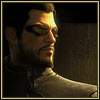
Esoteric - Posts: 1603
- Joined: Sun Aug 22, 2004 1:12 pm
- Location: The Lost Room.
I have that book. It's alright for realism but it didn't really do well for me.
I suggest going to an oekaki/da and getting some critisism. Thats how I learned. Yep getting told what to do and doing it. It helps more then you think.
Also if you want to draw anime I suggest Christipher Heart's books. The style is a bomb out but the basic anatomy is pretty good. It helped me alot. Besides, you can always apply a more "authintic" anime style if you hate looking at his.
I suggest going to an oekaki/da and getting some critisism. Thats how I learned. Yep getting told what to do and doing it. It helps more then you think.
Also if you want to draw anime I suggest Christipher Heart's books. The style is a bomb out but the basic anatomy is pretty good. It helped me alot. Besides, you can always apply a more "authintic" anime style if you hate looking at his.
-
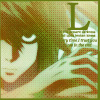
Jessi Ray - Posts: 32
- Joined: Sun Apr 01, 2007 12:00 pm
- Location: With Waldo.
Honest critique is invaluable. If you don't get it online, ask your friends or family. Just explain to them you really want to improve your work and would appreciate any tips on how you could improve it, and people are usually willing to help out. After you make changes, go back to them and ask them if it has improved.
-
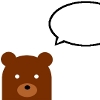
Syreth - Posts: 1360
- Joined: Thu Jul 15, 2004 3:12 pm
- Location: Central Washington
11 posts •
Page 1 of 1
Who is online
Users browsing this forum: No registered users and 13 guests

